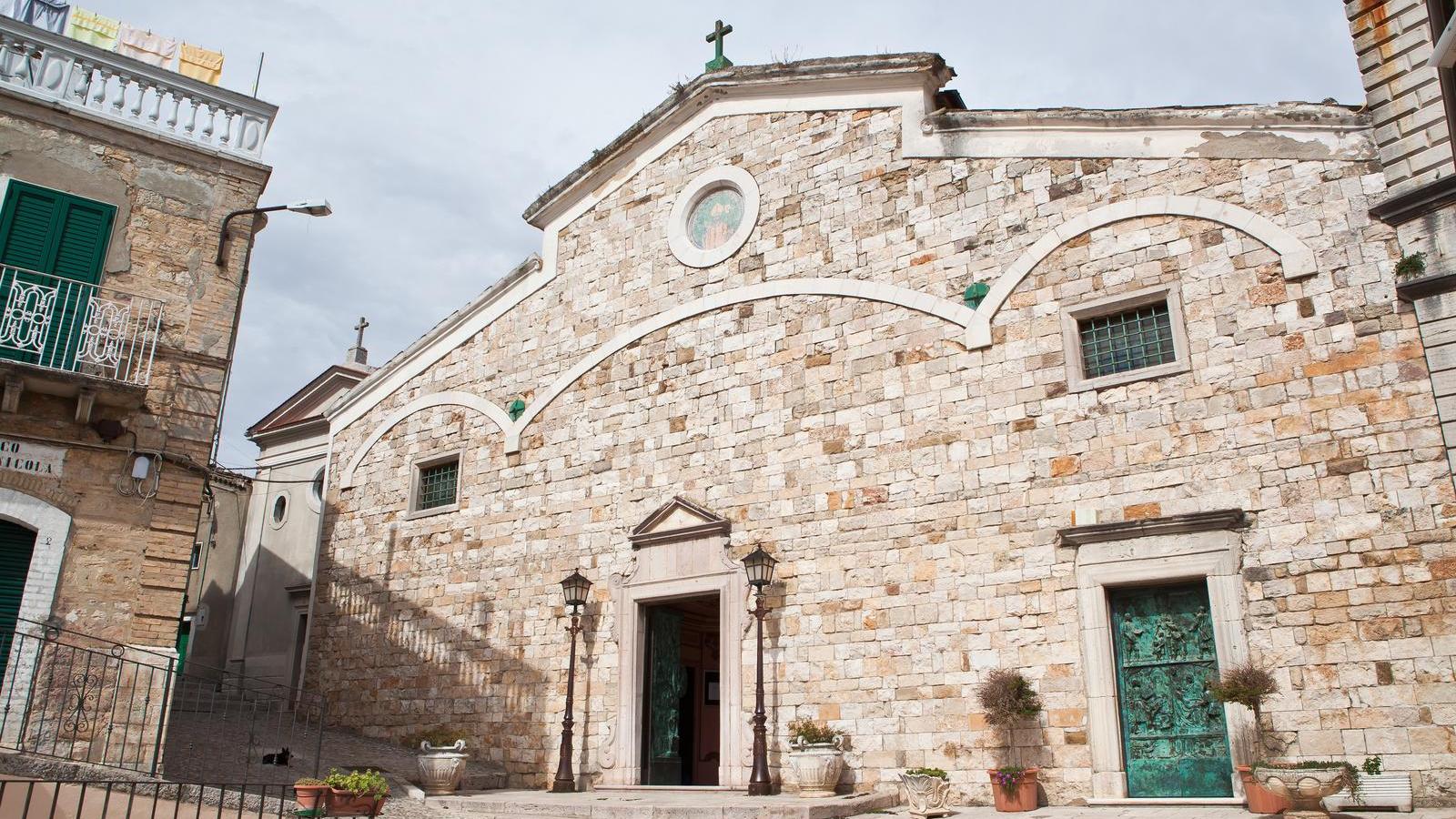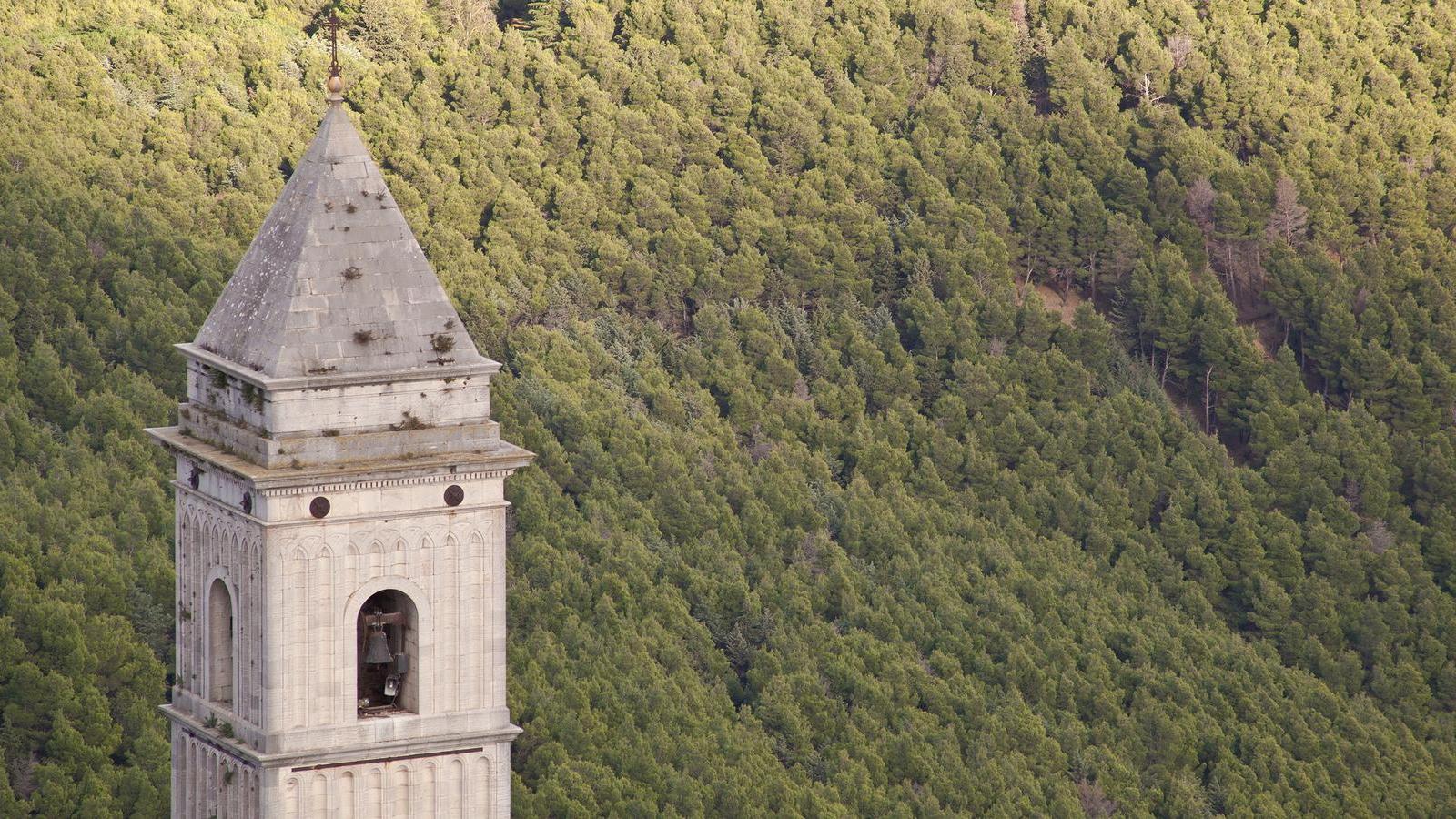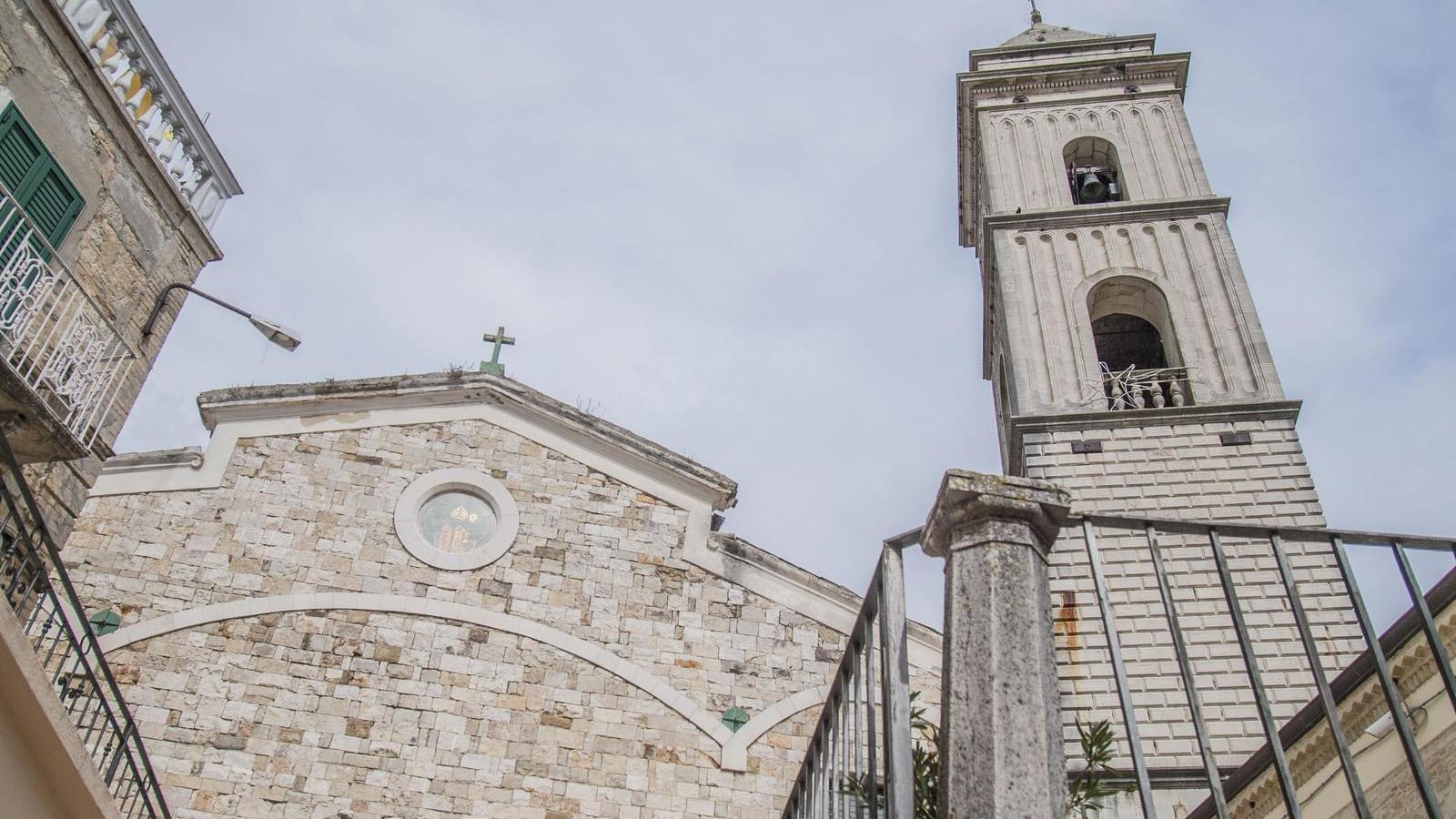Photo gallery
Information
The present building was built between the fifteenth and sixteenth centuries by order of the Orsini d'Aragona, lords of Sant'Agata, on the site of a previous church of the Norman period, already named after Saint Nicholas, whose cult spread in Puglia when the relics of the Holy Bishop of Mira were moved to Bari by some sailors in 1087.
Restored, modified and enlarged over the centuries, the factory has preserved the original plant with three naves and a Latin cross. In the seventeenth century the Chapel of SS. Rosario was built in the right aisle and in the left the Chapel of SS. Sacramento and the Chapel of the three owners of the Parishes; in the eighteenth century the ceramic floor was rebuilt. At the beginning of the 19th century another factory was added to arrange the picture of the Madonna degli Angeli with the Statues of Saint Agatha and Saint Lucia. In 1930 it was damaged by the earthquake to be repaired once again.
The stone facade of Trani is asymmetrical and has two entrances; the main portal, in pink stone, dates back to the nineteenth century. The church is flanked on the right side of the bell tower, with a square base decorated with ashlar and the roof is pyramid-shaped. Inside the central nave is decorated with nineteenth-century stucco that has Corinthian capitals, oval, heads of angels and medallions with palm trees.
Among the many works of art that embellish the church, are worth mentioning: the sixteenth-century Nativity scene by Stefano da Putignano; the "Madonna del Suffragio with Saints Domenico and Gaetano and guardian angel", valuable seventeenth-century canvas by Pacecco de Rosa; the seventeenth-century wooden choir in black walnut; the octogonal pulpit in pink granite of the seventeenth century; the wooden triptych dating back to 1606, which contains the statues of the owners of the three parishes of San Nicola, San Michele Arcangelo and Sant'Andrea; a baptistery of 1714; the Canvas of the Madonna del Carmine of 1700; the Statue of Sant'Agata, patron saint of the village and the Cenacolo.
The crypt is an artistic unicum; it is divided into three parts: the first, larger, with barrel vaults was decorated in the 1960s to encaustic scenes of the Passion and death of Jesus and the characters depicted have the faces of the Santagatesi; The second, quadrangular, has four ribs resting on low columns and the third, consisting of a single barrel vault and enriched with decorations in Baroque style.





